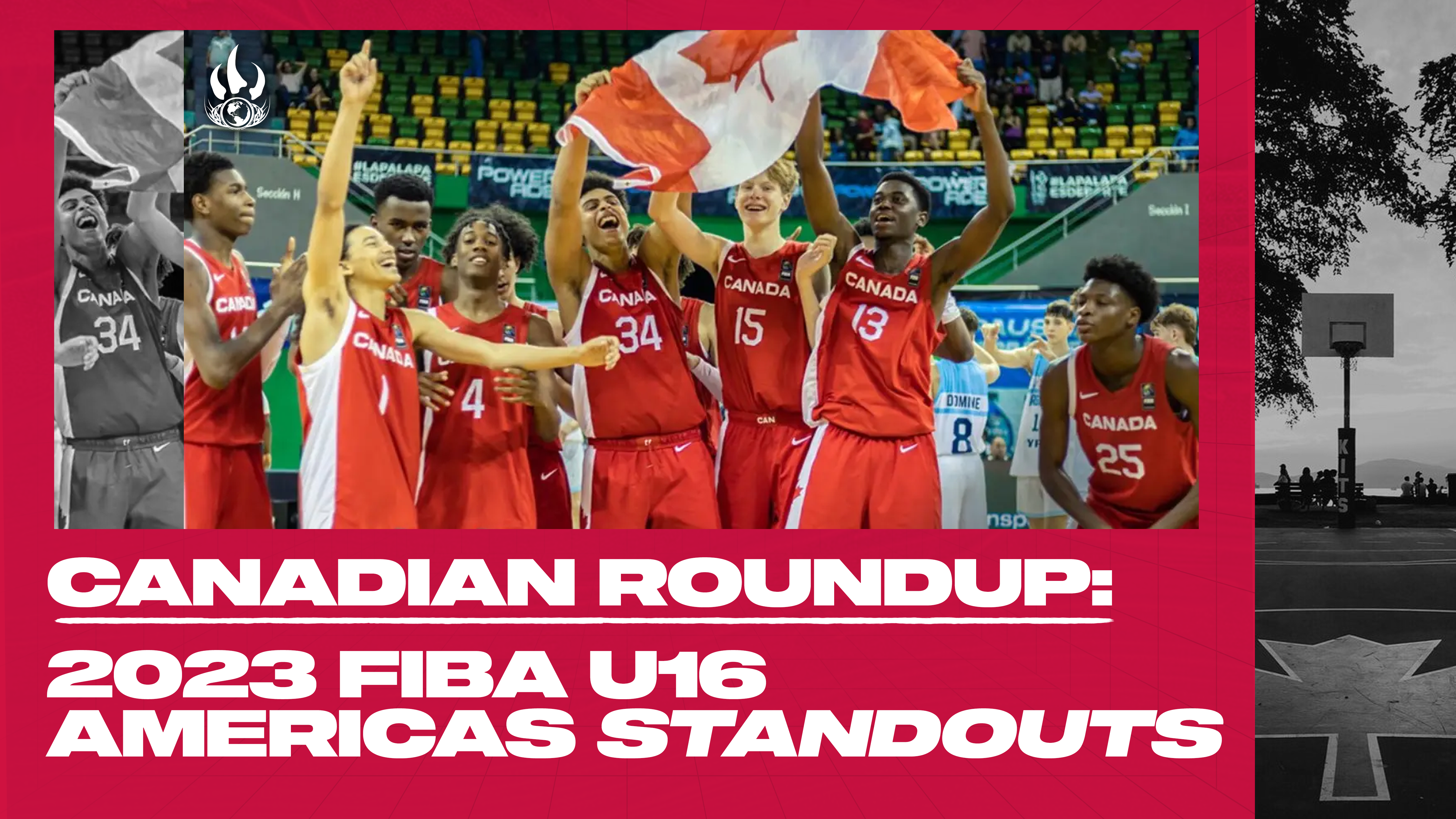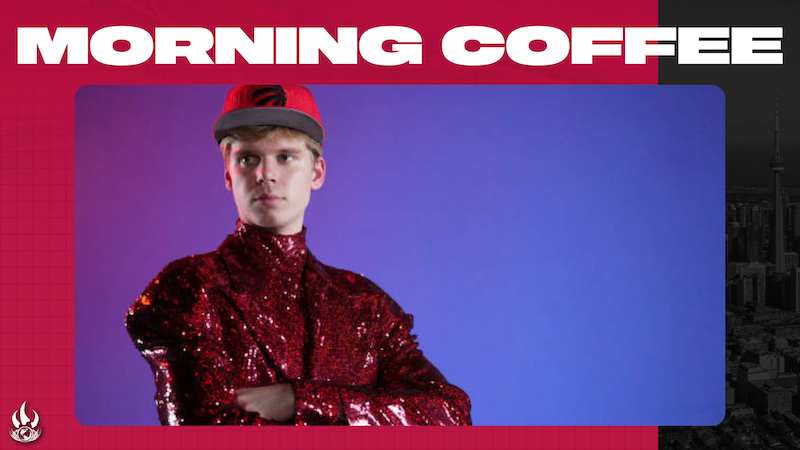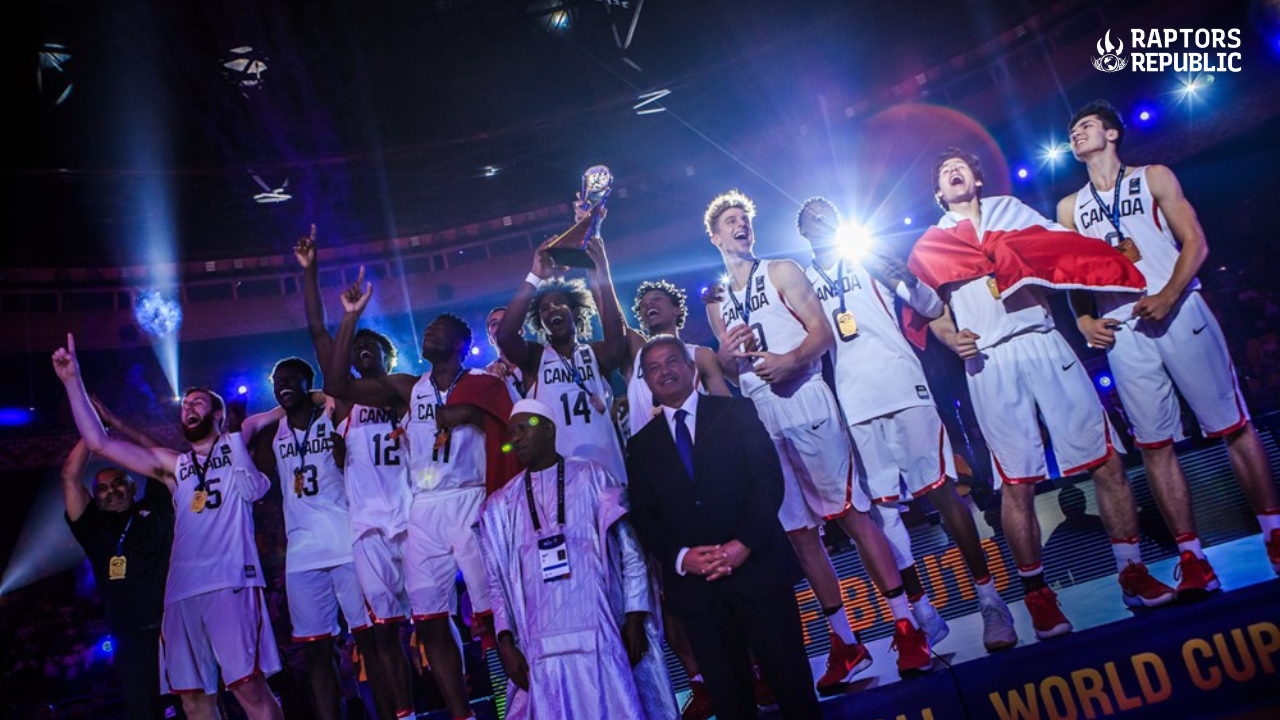With a 2nd place finish at the 2023 FIBA U16 Americas, the Canadian Junior Men’s National Team extended their medal streak to 8 consecutive U16 events. But more importantly, this cohort of players will regroup in a year’s time in Turkey, after punching their ticket to the FIBA U17 World Cup.
By all accounts, this edition of the U16 squad was not Canada’s strongest. If you want evidence of this, look no further than the 118-36 rout Canada suffered in the finals against the USA. Despite the perceived lack of high end talent coming into the tournament (especially compared to the all-time team the USA constructed), Canada, led by coach Chris Cheng, did a masterful job of just finding ways to win. The semifinals win against a talented Argentina team stood out as a signature victory for this year’s U16 team.
Plugging it once again, Hair Canada always covers Canada Basketball at these youth events and has an extremely insightful tournament summary each time. If you want to know how each player on the roster fared, he’s the go to, trusted source for an objective analysis.
In today’s Canadian Roundup, I’ll be looking at some of the Canadian prospects who caught my eye at the 2023 FIBA U16 Americas. A semi deep-dive on these standouts, with a focus on the microskills that empowered each player to find success in the tournament.
Paul Osaruyi
- Birthdate: Feb 26, 2008
- Height: 6’8″
| MPG | PPG | REB | AST | STL | BLK | FG% | 3P% | FT% |
| 25.9 | 14.8 | 8.3 | 0.3 | 0.5 | 1.3 | 42.3 | 18.2 | 70.0 |
A long 6’8″ PF/C, Paul Osaruyi was by far the biggest standout and best player for Canada at the 2023 FIBA U16 Americas. Considering the fact he’s born in 2008, while the majority of players in the tournament are born in 2007, Osaruyi’s play becomes that much more impressive. So impressive in fact, that he was named to the FIBA U16 Americas All-Star 5 team.
At this current moment in time, Osaruyi’s elite touch is his calling card on the offensive end. Compared to the main Canadian big man prospects on the last two U16 teams I watched (Char Yeiy & Oliver Rioux: 2021 FIBA U16, Dylan Kalambay & Enoch Boakye: 2019 FIBA U16), I do think Osaruyi blows them all out of the water in terms of touch, and it’s not even close. The freshly drafted Leonard Miller, who was also on that 2019 FIBA U16 team (though he played sparingly) is probably a better comparison for Osaruyi’s touch. And even Miller’s touch wasn’t this advanced at 16.
Where Osaruyi’s soft, pillowy touch really stands out is on his push shots/floaters. The ball just has a knack of lightly bouncing and hanging around on the rim before eventually going in (the 3rd and 5th plays in the video below are just great examples of this). At this moment in time, I would say these push shots are a resilient shot attempt for Osaruyi. He’s comfortable getting to his push shot from inside the paint, but his range can extend to outside from the short corners as well, which is truly special! Osaruyi is also comfortable getting to this shot under heavy contests (at his height and length, he’s often unbothered) and even when he doesn’t get clean catches/gathers (think offensive rebounds/recovering loose balls). Projecting into the future, his elite touch should help Osaruyi’s offensive value as a scoring play finisher, whether it comes in the PnR or capitalizing on lay down passes from his teammates in the dunker spot.
Of course Osaruyi didn’t shoot 100% on these floaters in the tournament. In the interest of being as objective as possible, I cut up and included some of Osaruyi’s misses on push shots (short arms one of them and misses wide left on another).
Osaruyi’s elite touch also jumps out in other types of shot attempts as well, but especially when he uses his right hand and goes off the backboard. The first finish in the clip below was truly astounding to me, mainly for the fact Osaruyi even decided to go off glass from that angle/distance and the fact the shot went in.
Aside from the elite touch, Osaruyi had some interesting flashes with the ball in his hands. I don’t have the official measurements, but Osaruyi clearly is a long athlete. The amount of ground he’s able to cover after picking up his dribble with his long legs and gargantuan strides was eye opening. This post-up possession I feel really highlights just how long he is (look at how wide his base gets on the fake drop step!). That extra step he took after beginning his swivel I think ended up actually stopping some of his momentum (he seemed to be thrown a little off balance at this step), reducing the amount of ground he could have covered.
Here’s another post up possession with very similar footwork on the drop step! The overwhelming amount of ground covered here after picking up the dribble is somehow even more ridiculous than the clip above. Sidenote: shoutout to Josh Codinera for the clip, well worthy of a follow for all things draft and basketball scouting related. I truly learn so much from his work.
And this drive from the quarterfinals was my favourite self-created shot from Osaruyi in the halfcourt at the FIBA U16 Americas. Aside from being able to string together multiple jab steps (which by the way seems to be his go-to combo at the moment) and dribble combinations so fluidly, he just seemed so slippery on this drive.
I feel what made Osaruyi so slippery in the clip above is once again his long strides. He’s able to basically step around the defender’s body at this moment of the drive (see screenshot) and once he gets that outside leverage, Osaruyi has won the possession and gets a layup out of it.

Defensively, Osaruyi was Canada’s best rim protector, leading the team with 1.3 blocks per game. This block in the clip below was the one that jumped out the most to me while watching live. Despite mistiming his jump and going early, Osaruyi was still able to block the step-through shot attempt on his way down with his absurd length.
This defensive possession was definitely another intriguing flash of Osaruyi’s potential. Matched up against Karim Lopez (a 6’8″ Mexican wing who was one of the best prospects in the tournament), Osaruyi’s ability to flip his hips so quickly and repeatedly in a short amount of time helped to contain the drive. Perhaps a sign of a future where Osaruyi can be a good perimeter defender in situational switches.
Godson Okokoh
- Birthdate: Aug 13, 2008
- Height: 6’6″
| MPG | PPG | REB | AST | STL | BLK | FG% | 3P% | FT% |
| 18.4 | 5.0 | 3.7 | 0.7 | 0.5 | 0.3 | 44.0 | 54.5 | 50.0 |
I had the chance to watch Okokoh for the first time at the 2023 BioSteel Futures game. My main takeaway from that one game was he was fairly fluid for a player his size and age. Of course there were still some awkward moves here and there, but overall I came away thinking Okokoh was an interesting big man prospect to keep tracking over the years.
So, after watching 6 more games of Okokoh, what parts of my initial evaluation remained true? Well, for one, Okokoh’s fluid movement remained impressive. Coach Cheng routinely put Okokoh at the top of Canada’s 1-2-2 zone in the tournament, a position that is never filled by a slow-footed, labouring big. In fact, I am probably going to agree with Hair Canada that Okokoh is potentially a wing/big hybrid prospect moving forward due to his fluidity.
This two way sequence perfectly encapsulates Okokoh’s current strengths as a player. Forced to cover 2, he makes the rotation to the wing, and then goes to recover to the corner as well, where he first plays the drive and then contests the shot. At professional levels, the rotation to the corner isn’t even his responsibility (see “X-Out” rotation)! While the shot was still semi-open, I was impressed with the amount of ground Okokoh covered, which was only made possible by his fluidity, agility and length. After the miss, we see him make a strong rim run, catch the pass, dribble, gather and dunk all in 1 smooth motion. Really, really good stuff!
And he also had some interesting flashes guarding Lopez on the perimeter in the quarterfinals against Mexico. To be fair, in the second clip he does get caught a little off balance and fall behind after Lopez resets, but still the flashes of fluidity are there.
Also, I would say Okokoh continues to be a good rim protector. He wasn’t the towering presence in the paint at the U16 Americas like he was at BioSteel (just the nature of the bigger athletes at a higher competition level), and yet I felt he was still quite effective. The block numbers don’t jump out and I think this does match the film. Rather than hunt blocks, Okokoh alters shots at the rim by staying vertical. He’s pretty adept at challenging shots without fouling, as seen by his 0.3 fouls per game (the lowest mark on the team despite playing the 6th most MPG). As an aside, the 1st clip is another great example of Okokoh’s sound defensive processing. You can see he recognizes that his teammate (#34 red) and himself are defending the same area and as a result, he problem solves and drops back to play the centre of the zone. Then Okokoh sees the post entry pass come in and rotates over to help by staying vertical on the contest. Just a fantastic defensive possession from such a young player.
Another constant in the 2 months since I first watched Okokoh was his poor touch. He had a couple bad misses from up close (which is pretty common at this age level to be fair). Ironing out this part of his game along with more offensive development off the dribble over the years will certainly be important if Okokoh ever does fully transition into a wing prospect.
The extra kicker that I didn’t see coming in my initial evaluation of Okokoh was the 3 point shooting. He took 1 3pt shot at the BioSteel Futures game and it was an airball long. At the FIBA U16 Americas it was an incredibly small sample size of 6 games, but Okokoh shot 6-11 at the tournament! He exclusively took 3’s in catch and shoot scenarios and at this point he’s limited as a 1-2 gather shooter (his preferred footwork is a L-R gather). It almost seems counterintuitive how well he shot from 3 considering his lack of touch (perhaps a red flag that this was mainly shooting variance?). I do think it bodes well for Okokoh’s offensive development that the shot looks smooth and is already falling semi-frequently, regardless of how “real” this shooting performance was. Something to definitely keep an eye on in his development curve.
Kamai Samuels
- Birthdate: Mar 07, 2007
- Height: 6’0″
| MPG | PPG | REB | AST | STL | BLK | FG% | 3P% | FT% |
| 25.5 | 10.5 | 7.0 | 5.3 | 1.2 | 0.2 | 35.2 | 28.6 | 38.9 |
While Kamai Samuels struggled scoring the ball in this tournament (10.5 PPG on ghastly 38.0/28.6/38.9 shooting splits), I thought he did a great job as a facilitator. Samuels led the tournament averaging 5.3 APG and was leaned on heavily to be Canada’s primary ball handler and perimeter creator.
Where Samuels really thrives as a playmaker is off of his own rim pressure. He’s got good enough burst and strides to beat his initial defender and generate paint touches consistently. Once he’s there, Samuels has a good feel of how to manipulate the help defenders. Improvisational jump passes, pass fakes with conviction and creative pass deliveries/angles, Samuels flashed it all in these dump off assists. Interestingly, Samuels (a right-handed shooter) seems to be left-hand dominant when it comes to passing the ball in these lay down scenarios.
Patrick Anamali
- Birthdate: Jan 23, 2007
- Height: 6’5″
| MPG | PPG | REB | AST | STL | BLK | FG% | 3P% | FT% |
| 25.0 | 7.3 | 5.5 | 0.8 | 1.2 | 0.7 | 36.4 | 23.5 | 40.0 |
Like Paul Osaruyi, the 2023 FIBA U16’s was the my first opportunity to watch Patrick Anamali. Defensively, he was quite impressive and was Canada’s most disruptive and active defender in the tournament. His 1.2 SPG and 0.7 BPG were 2nd and 3rd on the team respectively, and his combined 1.9 stocks per game ranked 2nd on the team overall.
Speaking of microskills, I thought Anamali had some really strong moments attacking closeouts (mainly through using a negative step) in this tournament. His overall offensive game and feel needs a ton of development, but there’s definitely already some value in his craft attacking tilted defenses. I want to breakdown in detail the 3 clips below because I was thoroughly impressed at the nuances in Anamali’s game:
- Clip 1: Anamali freezes his defender with a negative step + hesitation combination and easily beats the closeout. What a move, the hesi especially was nasty
- Clip 2: Anamali uses a negative step again on the catch, but this time it’s a quick rip and go. Another clean win against a closeout.
- Clip 3: Anamali looked so slippery on this drive. Negative step again, but this time tightropes along the baseline for the reverse finish. Very nice strides, balance and coordination to stay in bounds. Sidenote: that 1-handed live dribble skip pass from Jordan Charles was equally insane



